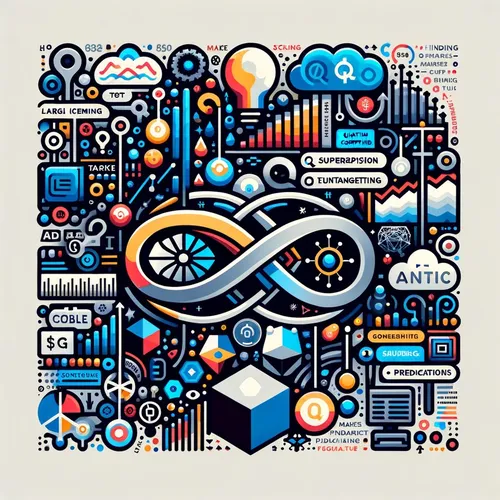Quantum Leap: Meditron's Real-Time Drug Discovery Revolutionizes Pharma
- Author
- Inception Point Ai
- Published
- Thu 19 Jun 2025
- Episode Link
- https://www.spreaker.com/episode/quantum-leap-meditron-s-real-time-drug-discovery-revolutionizes-pharma--66629273
This is your Quantum Market Watch podcast.
The moment you realize the quantum world is slipping into the mainstream is the moment you hear a headline like I did this morning: “Pharma Giant Meditron Unveils Real-Time Drug Discovery with Quantum Computing.” Welcome back to Quantum Market Watch. I’m Leo—Learning Enhanced Operator, quantum computing specialist and your guide to the strange, electrifying intersection where today’s tech headlines collide with the quantum universe.
Now, let’s cut straight to the entanglement. Today, June 19, 2025, the pharmaceutical sector set the industry abuzz with an announcement that could redefine the very foundation of drug discovery. Meditron, collaborating with Pasqal, just revealed that their latest line of quantum-enabled drug design tools—running on Pasqal’s neutral-atom quantum processor—has identified several new lead compounds for neurodegenerative diseases, all in a fraction of the time traditional supercomputers would require. Picture a world where instead of waiting months for molecular simulations, you’re analyzing viable candidates by the hour. That’s not just incremental speed—that’s a phase transition for the entire sector.
Let me pull you into my lab for a second. Imagine: A refrigerated chamber humming quietly, Pasqal’s Orion Beta machine sits at its heart, orchestrating a dance of hundreds of rubidium atoms, each held flawlessly in an optical tweezers array. No silicon here—just pure, programmable quantum matter, cooled to near absolute zero. As control lasers weave through, the atoms’ spin states begin their computation, mapping out the energy landscapes of complex biomolecules in parallel. Where a classical computer gets stuck, choking on the combinatorial explosion, these quantum processors leap over the wall via entanglement—solving in hours what once took years.
Meditron’s breakthrough is only possible because of a decade’s worth of groundwork. In just the last week, Pasqal announced new deployments of these neutral-atom QPUs across major European and Canadian high-performance computing centers, cementing their upgradable quantum platforms as the backbone for emerging enterprise applications. Not only do these machines promise future digital, fault-tolerant quantum computing, but their “analog mode” is already delivering real quantum value to researchers right now. Each new installation is another node in a rapidly growing lattice—like atoms aligning into a robust, scalable crystal, ready for the pressures to come.
Why does this matter so much to pharma? Because quantum computers uniquely handle the quantum nature of chemistry itself. Every drug molecule is a quantum system; its behavior relies on the subtle play of electron clouds, spin states, and entanglement—features that escape classical simulation at scale. By directly modeling these quantum effects, quantum computers don’t just accelerate simulations; they unlock entire classes of compounds that were invisible to classical eyes. That means more precise drugs, fewer side effects, and personalized medicine tailored to your quantum signature.
This isn’t a solitary breakthrough. Just days ago, IBM redoubled its commitment to fault-tolerant, large-scale quantum computers at its new data center, and industry reports show quantum investments in early 2025 are outpacing nearly all of last year. The field’s momentum is like a quantum superposition—many states of excitement existing simultaneously, ready to collapse into breakthroughs across finance, logistics, energy, and now, perhaps most impactfully, in healthcare.
Picture the ripple effect: Faster drug pipelines mean faster regulatory approvals, earlier access for patients, and unprecedented agility in responding to public health crises. The societal dividends are immense—less suffering, lower costs, and a new paradigm for how we approach disease.
As always, the quantum world...
